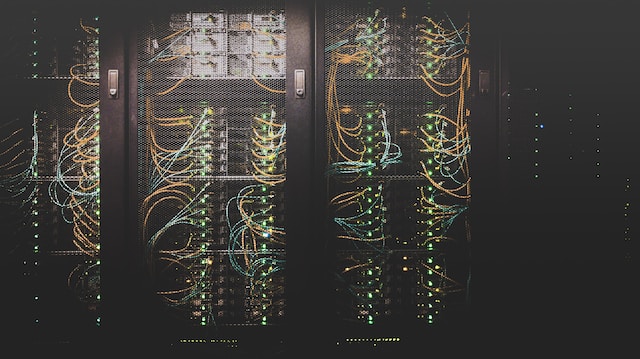Understanding Air-Gapped Networks: Safeguarding Critical Systems from Digital Intrusion
In today’s interconnected world, where data breaches and cyber attacks have become an unfortunate reality, the need for robust cybersecurity measures is paramount. One such measure is the utilization of air-gapped networks, which offer an additional layer of protection for highly sensitive and critical systems. In this article, we will explore the concept of air-gapped networks, their purpose, and their significance in safeguarding against digital threats.

Defining Air-Gapped Networks
An air-gapped network refers to a secure network environment that is physically isolated from external networks and the internet. In this setup, computers or devices within the network are not connected to any other networks through wired or wireless means, preventing unauthorized data transfer or remote access. The term “air gap” implies the presence of a physical gap or barrier that restricts the flow of data between the isolated network and the outside world.
Purpose and Benefits
The primary purpose of an air-gapped network is to protect critical systems and sensitive information from cyber threats, including unauthorized access, malware infiltration, data exfiltration, and other forms of digital attacks. By physically isolating the network, potential attackers are thwarted from exploiting vulnerabilities and gaining unauthorized access to the protected assets.
The benefits of air-gapped networks are numerous:
- Enhanced Security: Air-gapped networks provide a higher level of security compared to traditional networks connected to the internet. The isolation eliminates many attack vectors and reduces the potential for cybercriminals to exploit software vulnerabilities or launch remote attacks.
- Data Protection: Air-gapped networks ensure the confidentiality and integrity of sensitive data. Critical information, such as government secrets, classified military intelligence, intellectual property, and financial data, can be stored and processed within the isolated network without the risk of exposure to external threats.
- Limitation of Attack Surface: By physically disconnecting from the internet and other networks, the attack surface is significantly reduced. This means there are fewer entry points for hackers to exploit, making it harder for them to breach the system.
- Offline Operations: Air-gapped networks enable offline operations, allowing organizations to carry out sensitive tasks without the need for constant connectivity. This is particularly advantageous for scenarios where continuous network access is either impractical or presents a security risk.
- Compliance and Regulatory Requirements: In sectors such as defense, finance, healthcare, and critical infrastructure, regulatory standards often require the use of air-gapped networks to protect sensitive data. Adhering to these standards helps organizations meet compliance obligations and mitigate legal risks.
Challenges and Considerations
While air-gapped networks provide robust security, they are not without challenges and considerations:
- Data Transfer: Transferring data to and from air-gapped networks can be cumbersome and require specific protocols. Physical media, such as USB drives or optical discs, are commonly used for transferring data securely between isolated systems and the outside world.
- Operational Efficiency: Isolated networks may face operational challenges due to the lack of connectivity. For tasks that require real-time data updates or external communication, alternative solutions must be devised.
- Insider Threats: Air-gapped networks are not immune to insider threats. Authorized individuals with physical access to the network may intentionally or unintentionally compromise security protocols, allowing for the introduction of malware or unauthorized data extraction.
In an era where cybersecurity threats continue to evolve, air-gapped networks serve as a valuable defense mechanism to protect critical systems and sensitive information. By physically isolating networks from external connections, organizations can significantly reduce the risk of cyber attacks and data breaches. While air-gapped networks come with operational challenges, their benefits in terms of enhanced security and data protection make them a crucial component of comprehensive cybersecurity strategies for high-value assets and critical infrastructure.
Listings related to article "Understanding Air-Gapped Networks: Safeguarding Critical Systems from Digital Intrusion"
DryMaster Systems
Take control of your future! Launch your independent venture in carpet, upholstery, tile, grout, and air duct cleaning. Escape the burden of annual franchise fees and unlock exclusive access to top-quality professional cleaning gear. Request our complimentary business guide today to discover more.
- Category
- Business » Small Business » Consulting
More articles like "Understanding Air-Gapped Networks: Safeguarding Critical Systems from Digital Intrusion"
AI: Encryption’s Ally or Achilles’ Heel?
Encryption, the cornerstone of online security, scrambles data into an unreadable mess, accessible only with a secret key. For years, it’s been our shield against unauthorized access. But with the rise of Artificial Intelligence (AI), a question looms: can AI crack the codes and render our data vulnerable? AI: A Double-Edged Sword AI’s potential to […]
Understanding Oracles in Blockchain: Bridging the Gap Between Smart Contracts and the Real World
Blockchain technology has transformed the way we perceive and conduct transactions, introducing decentralized and secure systems that eliminate the need for intermediaries. Smart contracts, a key component of blockchain platforms, enable automated and trustless execution of agreements. However, there’s a crucial challenge these contracts face—accessing real-world data. This is where oracles come into play. What […]
WordPress Recovery Mode: A Guide to Fixing Critical Errors
WordPress Recovery Mode is a feature introduced in WordPress version 5.2 to help website owners and administrators recover from critical errors that may prevent them from accessing their WordPress dashboard. When a critical error occurs, WordPress automatically enters Recovery Mode, displaying a message to the user and providing options for troubleshooting and resolving the issue. […]






